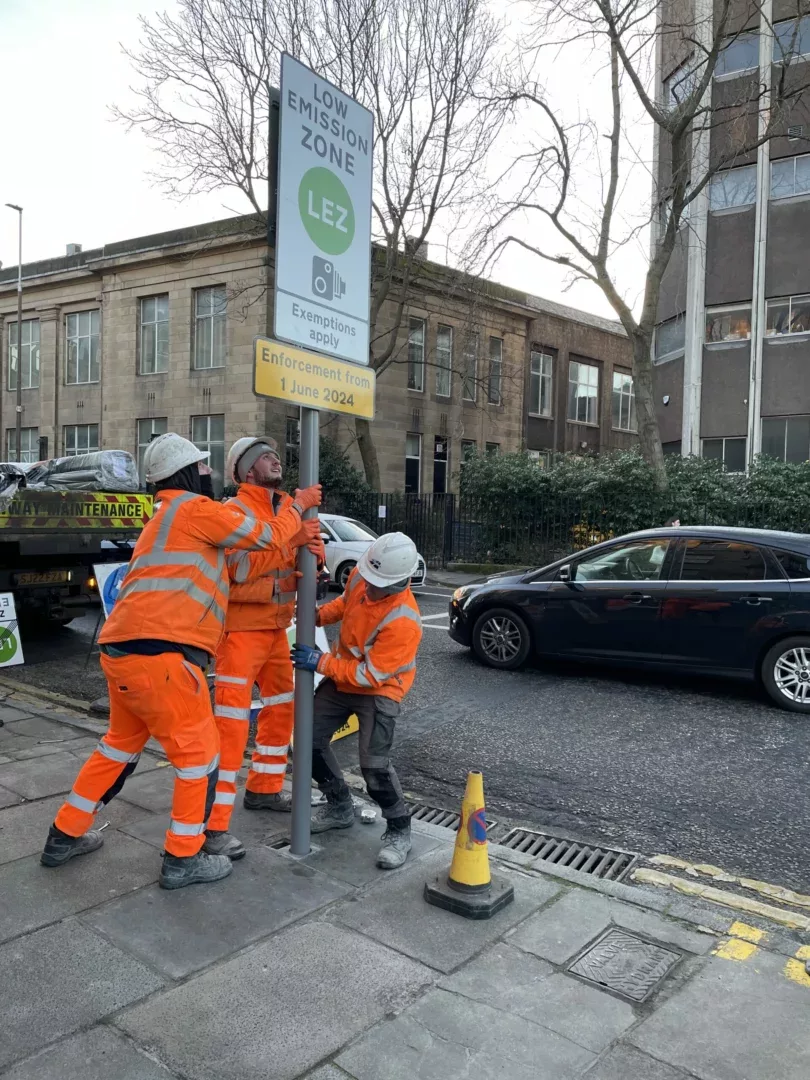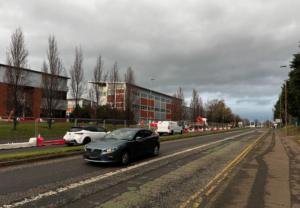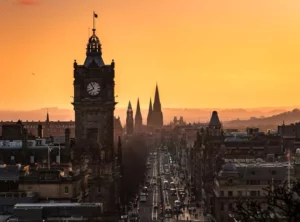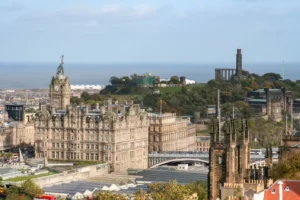Official road signs are being installed on the boundary of Edinburgh’s Low Emission Zone (LEZ), with six months until enforcement begins.
The signs, which are being used in the four Scottish cities with city centre LEZs, inform drivers they are driving within the zone. In Edinburgh, additional warning signs will tell drivers that Penalty Charge Notices (PCNs) will not be issued until 1 June 2024 and only to the most polluting vehicles.
On Wednesday, Transport and Environment Convener Councillor Scott Arthur met contractors installing some of the first signs and urged drivers to prepare for the changes coming into force from 1 June 2024.
Councillor Scott Arthur, Transport and Environment Convener, said: “While enforcement against non-compliant vehicles won’t begin until 1 June 2024, these signs are a reminder that the changes will soon come into force.
“By allowing a two-year grace period we wanted to give people plenty of time to prepare for the LEZ. However, with six months to go there’s still time, and I’d urge anyone who’s eligible to apply for the support funds on offer. Essentially, reducing the most polluting vehicles from the city will benefit everyone. Air pollution harms both our physical and mental health, so the LEZ we will help create a healthier place for everyone, reducing inequalities and making the city centre a more welcoming place.”
Dona Milne, Director of Public Health, NHS Lothian, added: “Reducing air pollution has clear long and short-term health benefits for everyone. Our hope is that improved air quality will also encourage people to take advantage of more sustainable and active ways of travel, such as walking, cycling and public transport, which is beneficial for individuals and communities alike.”
Some households and small businesses may be eligible for the Low Emission Zone Support Fund, funded by Transport Scotland and administered by Energy Saving Trust. This offers successful applicants grants to dispose of non-compliant vehicles and to help households invest in more sustainable forms of transport, including public transport or bike hire schemes.
Heather Quin, Senior Programme Manager at Energy Saving Trust, said: “We’re pleased to support the introduction of Scotland’s low emission zones (LEZ) through our delivery of the LEZ support funds on behalf of the Scottish Government. With the need to improve air quality in our cities, it’s important that lower-income households and small businesses get the support they need to adapt and make the switch to low carbon transport. This funding has already helped hundreds of individuals, families and businesses in and around Edinburgh adopt more sustainable travel options. With the introduction of Edinburgh’s LEZ just six months away, we hope to enable even more people to enjoy the many benefits that improved air quality and access to active and sustainable transport can bring.”
Automatic Number Plate Recognition (ANPR) cameras, which support enforcement, will be installed in late 2023/early 2024 and a mobile enforcement vehicle will be active from June 2024 onwards.
In early 2024 there will also be changes made to some street layouts and signals around the LEZ boundary to cut congestion and improve safety for everyone. Full details of the changes can be found on the Council website.
Independent market research carried out in June indicates that a majority of drivers in Edinburgh continue to support the LEZ and think protecting public health is important. Data analysed by the Scottish Environment Protection Agency (SEPA) earlier this year also revealed that overall compliance with Edinburgh’s LEZ emissions standards had increased from 48% to 78% over the last six years.
A city centre LEZ was introduced in Edinburgh on 31 May 2022, along with LEZs in Glasgow, Aberdeen and Dundee, restricting the most polluting vehicles only and benefiting everyone’s health. In Edinburgh, a two-year grace period is in place, meaning no PCN charges will be issued during this time.
LEZ restrictions will apply to motor vehicles, except motorcycles and mopeds. Vehicles must meet the minimum emissions standards to drive within the zone, though national exemptions apply including for blue badge holders and emergency vehicles.






















